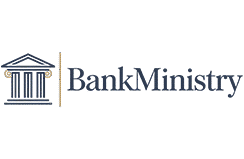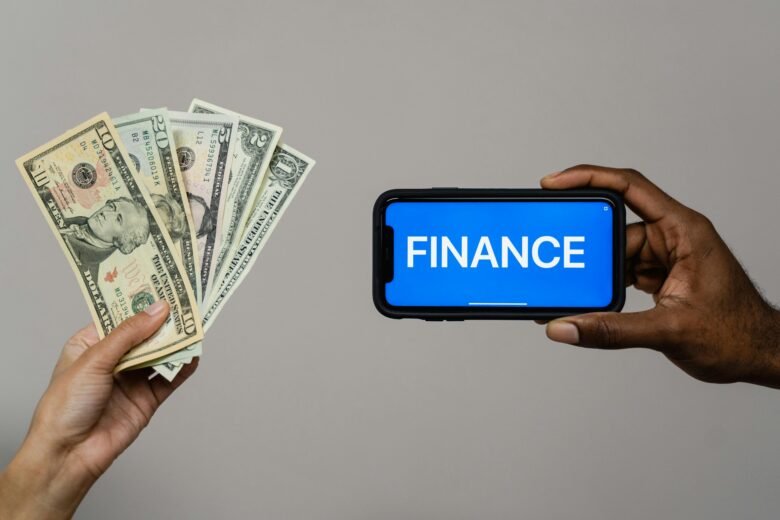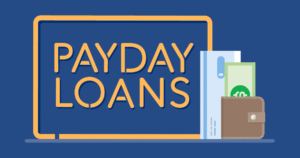Why Choose an Online Savings Account with No Fees?
In today’s financial landscape, savers in the USA are increasingly turning to online savings accounts with no fees to grow their money without the burden of maintenance costs, minimum balance requirements, or withdrawal penalties. Unlike traditional brick-and-mortar banks, online savings accounts often offer higher annual percentage yields (APYs), streamlined digital tools, and fee-free structures, making them ideal for budget-conscious individuals, students, or anyone looking to maximize returns on their savings. But with so many options available, how do you choose the best one? This comprehensive guide dives deep into the world of no-fee online savings accounts, analyzing top options, comparing their features, and providing practical advice to help you make an informed decision.
The why behind choosing a no-fee online savings account is simple: every dollar you save in fees is a dollar that can grow through interest. Traditional banks, like Bank of America or Regions, often charge monthly fees ($8 or $5, respectively) unless specific conditions are met, such as maintaining a minimum balance or linking a checking account. These fees can erode your savings, especially if your balance is modest. Online banks, operating without the overhead of physical branches, pass those savings to customers through higher APYs and no-fee structures. For example, accounts like the UFB Portfolio Savings offer APYs above 5%, while traditional accounts may yield as little as 0.01%–0.04%.
This guide will explore the what—the core features of no-fee online savings accounts—and the how—practical steps to select and manage one. We’ll compare top accounts, including UFB Portfolio Savings, SoFi Checking and Savings, American Express High Yield Savings, Discover Online Savings, and others, using data from reputable sources like CNBC, NerdWallet, and bank websites. We’ll also address common mistakes, safety precautions, and broader financial contexts to ensure you’re equipped to choose an account that aligns with your goals. Whether you’re saving for an emergency fund, a vacation, or a down payment, this 6,000+ word article will be your roadmap to financial success.
The Benefits of No-Fee Online Savings Accounts
Higher APYs: Maximizing Your Earnings
One of the most compelling reasons to choose an online savings account with no fees is the potential for higher APYs. Online banks like UFB, SoFi, and Discover consistently offer rates far above the national average of 0.42% (per FDIC data as of November 2024). For instance:
- UFB Portfolio Savings: Offers an APY above 5%, meaning a $10,000 balance could earn over $500 annually.
- Discover Online Savings: Provides a 3.50% APY, yielding $350 on the same balance.
- American Express High Yield Savings: Delivers a 3.60% APY, earning $360 annually.
Compare this to Bank of America Advantage Savings (0.01%–0.04%, or $1–$4 on $10,000) or Regions LifeGreen Savings (below 0.46%, or less than $46). The difference is stark: online accounts can grow your savings 10–100 times faster. This is because online banks have lower operational costs, allowing them to offer competitive rates without charging fees.
No Fees: Keeping Your Money Intact
Fees can silently drain your savings. A $5–$8 monthly fee, common in traditional accounts, equates to $60–$96 annually—potentially more than the interest earned at low APYs. No-fee online accounts eliminate:
- Monthly maintenance fees: UFB, SoFi, American Express, and Discover charge none, unlike Bank of America’s $8 (waivable) or Regions’ $5 (if not linked to a checking account).
- Minimum balance fees: No minimums are required to open or maintain these accounts, unlike Bank of America’s $500 daily balance to waive fees.
- Withdrawal fees: American Express has no withdrawal limits or fees, while Discover caps at six withdrawals but charges no fees within this limit. In contrast, Regions charges $3 per withdrawal after three.
This fee-free structure ensures every cent you deposit works toward your savings goals, not bank profits.
Digital Convenience and Accessibility
Online savings accounts are designed for the digital age, offering robust tools to manage your money from anywhere in the USA. Features include:
- Mobile Apps: Discover’s app, with over 2.9 million App Store ratings, supports mobile check deposits, Zelle® transfers, and account alerts. American Express and SoFi also offer highly rated apps for seamless management.
- 24/7 Customer Support: Discover and American Express provide round-the-clock phone and chat support, ensuring help is always available.
- Automated Savings Tools: SoFi’s Roundups and Vaults, Discover’s Early Pay, and American Express’s auto-deposit options make saving effortless.
These tools contrast with traditional banks, which may offer similar digital features but often require in-person visits for certain tasks, like opening accounts or resolving issues.
FDIC Insurance: Safety First
All reputable online savings accounts are FDIC-insured up to $250,000 per depositor, per ownership category, ensuring your money is safe if the bank fails. SoFi stands out with up to $2 million in coverage through its Insured Deposit Program, ideal for high-balance savers. This security matches traditional banks like Bank of America and Regions, but online banks often pair it with better returns.
Top No-Fee Online Savings Accounts in 2025
UFB Portfolio Savings (Axos Bank)
Overview: Offered by Axos Bank, a Member FDIC, the UFB Portfolio Savings account is a standout for its high APY and no-fee structure. It’s ideal for savers seeking maximum returns and flexible access.
- APY: Above 5% on all balances, one of the highest available.
- Fees: No monthly maintenance, service, or minimum balance fees.
- Minimum Deposit: None required.
- Unique Features:
- Optional ATM card with unlimited withdrawals, rare for savings accounts.
- Overdraft protection when linked to a checking account.
- Digital tools for transfers, mobile check deposits, and account management.
- Drawbacks: Fully online, with no physical branches, which may not suit those needing in-person support.
Why Choose It?: The 5%+ APY is a game-changer, earning $500+ annually on a $10,000 balance, far surpassing traditional accounts. The ATM card adds liquidity, making it versatile for emergency funds.
SoFi Checking and Savings
Overview: SoFi, a Member FDIC, offers a hybrid Checking and Savings account with no fees, competitive APYs, and unique perks like a welcome bonus. It’s perfect for those wanting a one-stop banking solution.
- APY: Competitive, though not specified (typically 4%+ based on industry trends).
- Fees: No monthly, overdraft, or minimum balance fees.
- Minimum Deposit: None required.
- Unique Features:
- Up to $300 welcome bonus for direct deposits of $1,000+ during the bonus period.
- Up to $2 million in FDIC insurance via the SoFi Insured Deposit Program.
- Roundups for automatic savings and Vaults for goal-based saving.
- Early paycheck access (up to two days).
- Drawbacks: APY may require direct deposit to maximize, and no ATM card for savings-only access.
Why Choose It?: The bonus and high FDIC coverage make it appealing for new savers or those with large balances. The hybrid account simplifies banking for those managing checking and savings together.
American Express High Yield Savings Account
Overview: The American Express HYSA, offered by American Express National Bank (Member FDIC), combines a competitive APY with no fees or withdrawal limits, ideal for flexible savers.
- APY: 3.60% as of May 8, 2025.
- Fees: No monthly, wire transfer, or withdrawal fees.
- Minimum Deposit: None required.
- Unique Features:
- No withdrawal limits, unlike many savings accounts.
- Integration with American Express checking, CDs, and credit cards.
- 24/7 customer support and a highly rated mobile app.
- Drawbacks: No ATM access, limiting immediate liquidity. APY is slightly below top competitors like UFB.
Why Choose It?: The 3.60% APY and lack of withdrawal restrictions make it a strong choice for savers needing frequent access without penalties. Existing Amex customers benefit from ecosystem integration.
Discover Online Savings Account
Overview: Discover Bank, now part of Capital One (Member FDIC), offers the Discover Online Savings Account with a solid APY, no fees, and a generous welcome bonus, appealing to digital-first savers.
- APY: 3.50% as of June 26, 2025.
- Fees: No monthly, overdraft, or minimum balance fees. Potential fees for exceeding six withdrawals per month.
- Minimum Deposit: None required.
- Unique Features:
- $150–$200 bonus for new customers depositing $15,000–$25,000 by September 11, 2025.
- Early Pay for up to two-day early direct deposits.
- Zelle® integration and a top-rated mobile app.
- Access to 60,000+ no-fee ATMs (via linked checking accounts).
- Drawbacks: Six-withdrawal limit and $250,000 transfer cap may restrict flexibility. Single physical branch in Delaware.
Why Choose It?: The bonus and Early Pay feature are attractive for new savers, while the 3.50% APY is competitive, though slightly below Amex or UFB.
Other Notable Options
- Synchrony Bank High Yield Savings: 4.65% APY, no fees, optional ATM card with six free withdrawals per cycle, and up to $5 in ATM fee refunds. Ideal for those needing occasional ATM access.
- Varo Savings Account: Up to 5% APY on balances up to $5,000 with qualifying direct deposits (otherwise 2.50%), no fees, and tools like Save Your Pay. Best for small balances with direct deposit.
- Bask Bank Interest Savings: Competitive APY (unspecified but above average), no fees, and a unique Mileage Savings Account earning American Airlines AAdvantage miles instead of interest, appealing to frequent travelers.
How to Choose the Best Online Savings Account with No Fees
Step 1: Assess Your Savings Goals
Before selecting an account, clarify your financial objectives. Are you saving for:
- An Emergency Fund? Prioritize high APYs (e.g., UFB’s 5%+) and liquidity (e.g., Amex’s no withdrawal limits or UFB’s ATM access).
- A Short-Term Goal (e.g., vacation, wedding)? Look for bonuses (SoFi’s $300, Discover’s $200) or tools like SoFi’s Vaults to track progress.
- Long-Term Wealth Building? Focus on APYs and daily compounding (UFB, Amex, Discover) to maximize growth over time.
For example, a $5,000 emergency fund at 5% APY earns $250 annually, while at 0.01% (Bank of America), it earns just $0.50. Align your choice with your timeline and access needs.
Step 2: Compare APYs and Compounding
APY is the most critical factor for growth. Here’s a quick comparison for a $10,000 balance over one year:
- UFB (5% APY, daily compounding): ~$512.67
- Synchrony (4.65% APY, daily): ~$475.28
- Amex (3.60% APY, daily): ~$366.49
- Discover (3.50% APY, daily): ~$356.47
- SoFi (est. 4% APY, daily): ~$407.04
- Bank of America (0.04% APY, monthly): ~$4.00
- Regions (est. 0.10% APY, monthly): ~$10.00
Daily compounding, as offered by most online banks, slightly boosts earnings compared to monthly compounding. Use online savings calculators to project earnings based on your balance and timeline.
Step 3: Evaluate Fees and Restrictions
Ensure the account has no hidden fees. Check for:
- Monthly Maintenance Fees: All online accounts listed (UFB, SoFi, Amex, Discover) have none, unlike Bank of America ($8, waivable) or Regions ($5 without checking).
- Withdrawal Limits: Amex has no limits, while Discover and Synchrony cap at six per month. Exceeding limits may incur fees or account closure.
- Transfer Caps: Discover’s $250,000 limit per 30 days could affect large savers, unlike Amex or UFB.
Always review the Deposit Account Agreement for fine print on fees or restrictions.
Step 4: Consider Additional Features
Look for features that enhance your banking experience:
- Bonuses: SoFi ($300) and Discover ($150–$200) offer incentives for new customers, boosting initial savings.
- FDIC Coverage: SoFi’s $2M coverage is ideal for high balances, compared to the standard $250,000.
- Digital Tools: SoFi’s Roundups, Discover’s Zelle®, and Amex’s Savings Dashboard cater to tech-savvy savers.
- ATM Access: UFB and Synchrony provide ATM cards, unlike Amex or Discover, which rely on transfers.
Choose features that align with your lifestyle, such as frequent direct deposits or automated savings.
Step 5: Verify FDIC Insurance and Security
Ensure the bank is FDIC-insured (all listed banks are) and uses robust security measures like encryption, two-factor authentication, and fraud monitoring. Check for unique protections, like SoFi’s extended FDIC coverage or Discover’s merger-related insurance details post-Capital One acquisition.
Step 6: Open and Fund the Account
- Application: Apply online via the bank’s website or app, providing personal details (e.g., Social Security number, ID).
- Funding: Use ACH transfers, mobile check deposits, or mailed checks. Most accounts (e.g., Amex, Discover) require funding within 45–60 days to avoid closure.
- Verification: Link external accounts with routing/account numbers or test deposits. Discover and SoFi offer instant verification with login credentials.
Set up automatic transfers or direct deposits to maintain consistent savings and qualify for bonuses or higher APYs (e.g., Varo’s 5% tier).
Practical Applications: How to Use Your No-Fee Online Savings Account
Building an Emergency Fund
An emergency fund covering 3–6 months of expenses is a cornerstone of financial security. Online savings accounts are ideal due to their high APYs and accessibility. For example:
- Scenario: You save $15,000 for emergencies in a UFB account at 5% APY. After one year, you earn $750 in interest, keeping your funds liquid via ATM access.
- Tip: Use Amex for frequent access (no withdrawal limits) or SoFi for higher FDIC coverage if your fund exceeds $250,000.
Set up monthly transfers (e.g., $200) to build the fund gradually, leveraging tools like SoFi’s Vaults to track progress.
Saving for Short-Term Goals
For goals like a vacation, wedding, or down payment (1–3 years), prioritize accounts with bonuses or goal-tracking features:
- Discover’s $200 Bonus: Deposit $25,000 within 45 days to earn the bonus, plus $875 in interest at 3.50% over a year.
- SoFi’s Vaults: Create separate “vaults” for each goal (e.g., $5,000 for a trip, $10,000 for a car), with Roundups to accelerate savings.
Use savings calculators to estimate how long it’ll take to reach your goal based on monthly contributions and APY.
Long-Term Wealth Building
For long-term goals (e.g., retirement, education), high APYs and daily compounding maximize growth. Consider:
- UFB or Synchrony: Their 5%+ and 4.65% APYs are best for compounding over years. A $20,000 balance at 5% grows to ~$32,577 in 10 years.
- CDs as an Alternative: Amex and Discover offer CDs with fixed rates (e.g., Amex’s 3.75% for 60 months), but funds are locked, unlike liquid savings accounts.
Avoid frequent withdrawals to let interest compound, and review APYs annually to ensure they remain competitive.
Automating Your Savings
Automation ensures consistent saving without effort:
- SoFi’s Roundups: Round up debit card purchases (e.g., $3.50 coffee to $4) and transfer the difference ($0.50) to savings. A $500 monthly debit spend could save $30–$50 monthly.
- Discover’s Early Pay: Get paychecks two days early, automatically transferring a portion to savings.
- Amex’s Auto-Deposit: Schedule fixed monthly transfers (e.g., $100) from a linked account.
Automation builds discipline, especially for busy professionals or students.
Broader Context: How Savings Accounts Fit into Your Financial Plan
Emergency Fund as a Foundation
An online savings account with no fees is perfect for an emergency fund because it balances growth (high APYs) and accessibility (no withdrawal penalties in most cases). Financial experts recommend 3–6 months of expenses ($10,000–$30,000 for most U.S. households). For example, a $20,000 fund at Discover’s 3.50% earns $700 annually, while at Bank of America’s 0.04%, it earns just $8. Place this fund in a high-yield account like UFB or Synchrony to stay ahead of inflation (currently ~3% annually).
Complementing Other Financial Tools
- Checking Accounts: Pair your savings with a no-fee checking account (e.g., SoFi, Discover Cashback Debit) for daily expenses and overdraft protection.
- CDs: For funds you won’t need for 1–5 years, consider Discover or Amex CDs with fixed rates (e.g., 3.75% for 60 months), but beware early withdrawal penalties.
- Investments: For long-term goals (10+ years), high-yield savings can hold funds temporarily before investing in stocks, ETFs, or IRAs via platforms like Merrill Edge (Bank of America) or Fidelity.
Lifestyle and Financial Discipline
Saving is as much about behavior as tools. High-yield accounts encourage discipline by rewarding you with interest. For example, a U.S. worker saving $200 monthly in a UFB account at 5% accumulates $2,600 in a year (including ~$65 interest), versus $2,401 at Bank of America’s 0.04%. Pair this with budgeting apps like YNAB or Mint to track spending and redirect savings to your account.
Economic Factors
APYs are influenced by Federal Reserve rates, which have fluctuated (e.g., Amex’s APY dropped from 4.30% in August 2024 to 3.60% by May 2025). Monitor rate changes via tools like Bankrate or NerdWallet, and be prepared to switch accounts if APYs decline significantly. Online banks adjust rates faster than traditional banks, offering flexibility but requiring vigilance.
Safety Precautions and Common Mistakes to Avoid
Safety Precautions
- Verify FDIC Insurance: Confirm the bank is FDIC-insured (all listed banks are). Check coverage limits, especially post-merger (e.g., Discover and Capital One accounts may share $250,000 coverage for new accounts).
- Secure Your Account: Use strong passwords, enable two-factor authentication, and avoid public Wi-Fi for banking. Discover, Amex, and SoFi use encryption and fraud monitoring.
- Review Agreements: Read the Deposit Account Agreement for hidden restrictions, like Discover’s six-withdrawal limit or Amex’s 60-day funding requirement.
- Monitor Rate Changes: Variable APYs can drop (e.g., Discover’s from ~4% to 3.50%). Check rates quarterly to ensure competitiveness.
Common Mistakes to Avoid
- Ignoring APYs: Choosing a low-APY account (e.g., Bank of America’s 0.01%) over a high-yield option like UFB costs hundreds annually. Always compare rates.
- Overlooking Bonuses: Missing SoFi’s $300 or Discover’s $200 bonus means leaving free money on the table. Ensure you meet deposit or direct deposit requirements.
- Exceeding Withdrawal Limits: Discover and Synchrony cap withdrawals at six per month. Exceeding this risks fees or account closure.
- Not Automating: Manual saving is inconsistent. Use Roundups, auto-transfers, or Early Pay to build savings effortlessly.
- Neglecting Digital Tools: Failing to use apps or alerts (e.g., Discover’s savings calculator, SoFi’s Vaults) limits your ability to track and optimize savings.
Comparing Top Accounts: A Detailed Chart
Below is a comparison of the top no-fee online savings accounts, plus Bank of America and Regions for context, based on 2025 data:
| Account | APY | Fees | Minimum Deposit | FDIC Coverage | Unique Features | Drawbacks |
| UFB Portfolio Savings | 5%+ | None | None | $250,000 | ATM card, overdraft protection | No physical branches |
| SoFi Checking and Savings | ~4% (est.) | None | None | $2M | $300 bonus, Roundups, Vaults | APY may require direct deposit |
| American Express HYSA | 3.60% | None | None | $250,000 | No withdrawal limits, app integration | No ATM access |
| Discover Online Savings | 3.50% | None (within 6 withdrawals) | None | $250,000 | $150–$200 bonus, Early Pay, Zelle® | 6-withdrawal limit, $250,000 transfer cap |
| Synchrony High Yield Savings | 4.65% | None (within 6 withdrawals) | None | $250,000 | ATM card, $5 ATM fee refunds | 6-withdrawal limit |
| Varo Savings | Up to 5% (on $5,000) | None | None | $250,000 | Save Your Pay, high APY for small balances | 2.50% APY without direct deposit |
| Bank of America Advantage Savings | 0.01%–0.04% | $8 (waivable) | $100 | $250,000 | Keep the Change®, branch access | Low APY, fees |
| Regions LifeGreen Savings | <0.46% | None (with checking) | $50 online, $5 in-branch | $250,000 | 1% annual bonus (up to $100) | Low APY, checking required |
Key Takeaways:
- Highest APY: UFB and Varo (5%+), ideal for maximum growth.
- Most Flexible: Amex (no withdrawal limits) and UFB (ATM access).
- Best Bonuses: SoFi ($300) and Discover ($150–$200).
- Traditional Banks: Bank of America and Regions lag in APYs and have fees unless conditions are met.
Case Studies: Real-Life Applications
Case Study 1: Sarah, the Emergency Fund Builder
Sarah, a 30-year-old teacher in California, wants a $15,000 emergency fund. She chooses UFB Portfolio Savings for its 5%+ APY and ATM access. By depositing $500 monthly, she reaches her goal in ~2.5 years, earning ~$375 in interest annually. The ATM card ensures quick access during emergencies, like car repairs.
Case Study 2: Mike, the Short-Term Saver
Mike, a 25-year-old freelancer in Texas, needs $20,000 for a wedding in 18 months. He opens a Discover Online Savings Account, depositing $15,000 to earn the $150 bonus, plus $525 in interest at 3.50%. He uses Zelle® to transfer funds to vendors and the mobile app to track progress, meeting his goal with automated transfers.
Case Study 3: Emily, the Long-Term Planner
Emily, a 40-year-old manager in New York, saves $50,000 for her child’s college fund over 10 years. She selects American Express HYSA for its 3.60% APY and no withdrawal limits. Her balance grows to ~$71,632, earning ~$1,800 annually. She pairs it with Amex CDs for portions she won’t need soon, balancing liquidity and growth.
Broader Financial Context: Integrating Savings into Your Life
Budgeting and Savings
A no-fee online savings account thrives when paired with a solid budget. Use the 50/30/20 rule (50% needs, 30% wants, 20% savings/debt) to allocate funds to your account. For example, a $3,000 monthly income could direct $600 to savings, growing to $7,200 annually plus $360 at UFB’s 5%. Apps like YNAB or Mint can track spending and automate transfers.
Debt Management
High-yield savings accounts can fund debt repayment strategies. For example, use Discover’s $200 bonus to pay down a credit card, then redirect monthly savings to build an emergency fund, preventing future debt. Prioritize high-interest debt (e.g., credit cards at 20%) over low-APY savings if the interest cost exceeds earnings.
Inflation and Economic Trends
With U.S. inflation at ~3% in 2025, a 3.50%–5% APY keeps your savings ahead of inflation, unlike traditional accounts (0.01%–0.46%). Monitor Federal Reserve rate changes, as cuts (e.g., 2024–2025) lowered APYs like Amex’s from 4.30% to 3.60%. Consider locking in rates with CDs if rates drop further.
Lifestyle Integration
Incorporate savings into daily life:
- Students: Use Varo’s 5% APY for small balances or Amex’s no-fee structure to save stipends without penalties.
- Professionals: Leverage SoFi’s Early Pay or Discover’s Zelle® for seamless paycheck allocation.
- Retirees: Pair savings with CDs or IRAs for secure, long-term growth, using Amex or Discover’s ecosystem.
Advanced Tips for Maximizing Your Savings
- Laddering Accounts: Open multiple accounts (e.g., UFB for emergencies, SoFi for goals) to diversify APYs and features. Ensure total deposits stay within FDIC limits.
- Rate Chasing: Switch accounts if APYs drop significantly (e.g., from 5% to 3%). Use Bankrate or NerdWallet to compare rates monthly.
- Tax Considerations: Interest earned is taxable as ordinary income. For example, $500 interest from UFB requires reporting on your 1040 form. Consult a tax professional to optimize deductions.
- Goal Tracking: Use SoFi’s Vaults or Discover’s savings calculator to set milestones (e.g., $10,000 for a car). Review progress quarterly to stay motivated.
Read more Blogs – high yield savings account USA
Frequently Asked Questions
What is the best online savings account with no fees in 2025?
The UFB Portfolio Savings offers the highest APY (5%+), no fees, and an ATM card, making it ideal for most savers. SoFi Checking and Savings is great for bonuses ($300) and high FDIC coverage ($2M), while American Express HYSA suits those needing no withdrawal limits (3.60% APY).
Are online savings accounts safe?
Yes, all accounts listed (UFB, SoFi, Amex, Discover) are FDIC-insured up to $250,000 (SoFi up to $2M). They use encryption, two-factor authentication, and fraud monitoring to protect your funds.
How do I avoid fees in an online savings account?
Choose accounts with no monthly, minimum balance, or withdrawal fees (e.g., UFB, Amex, Discover). Review the Deposit Account Agreement to confirm no hidden fees and stay within withdrawal limits (e.g., Discover’s six per month).
Can I access my savings quickly?
Yes, but access varies. UFB and Synchrony offer ATM cards for instant withdrawals. Amex and Discover allow transfers or mailed checks, which take 1–3 business days. Set up overdraft protection (e.g., SoFi, UFB) for emergencies.
Disclaimer: This content is for informational purposes only. Always consult a qualified financial professional for advice and banking decisions.



